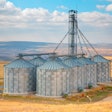
NOPA Soy Crush Report Expectations
- NOPA is scheduled to release its January report today at 11am CT.
- The third largest monthly crush on record, and the largest-ever crush for January is expected.
- The average trade estimate for January NOPA soybean crush is 183.1 million bushels within a range of 180.0-186.3 million bushels.
- If the average is met, crush would be nearly unchanged from December’s 183.2 million and 3.5% above last year’s Jan NOPA crush of 176.9 million.
- Daily crushing rates have been at historic highs over the past four months, averaging near 6 million bushels a day.
- The average estimate for end of January soybean oil stocks is 1.763 billion pounds within a range of 1.710-1.850 billion.
- The average estimate is above the 1.699 billion pounds in December, and the second highest of the last seven years, but below last year’s 2.013 billion.
FBN’sTake OnWhat It Means:Higher soybean prices during and after last year’s harvest sparked active producer sales of beans to processors, providing ample supplies which along with adequate margins have fueled record crush. However, US soybean supplies are forecast to shrink significantly ahead of harvest this year, and prices will need to ration demand and crushing activity.

Brazil Soy Crop Still Behind
- In Rio Grande Do Sul, 34% of the crop is pod filling compared to 53% average and 46% is flowering compared to 33% average.
- 2% of the crop is mature versus 3% average, and 5% last year.
- Last year, harvest in RGDS did not begin until the week of February 20.
- The weather forecast is for below normal rainfall in southern Brazil, which should allow harvest to accelerate.
- Mato Grosso’s harvest remains two and a half weeks behind last year’s pace (see Chart of the Day below).
- Northern Brazil remains wet for the next two weeks, particularly in Mato Grosso and Goias that will keep harvest pace slow.
- Brazil’s soybean exports in January were record low at 49,500 tonnes, while the US shipped a record large 8.9 million tonnes.
FBN’sTake OnWhat It Means:巴西豆作物背后,但受益ed from recent rainfall. A large crop will be needed to keep world stocks from tightening further. USDA left its Brazilian production forecast unchanged last week, while Conab raised its projection slightly. Brazil’s slow harvest pace keeps the US export window open, leading to solid demand here and supporting higher prices.
FBN Market Advisoryservices are offered by FBN BR LLC, dba FBN Brokerage, FBN BR and FBN Market Advisory (NFA ID: 0508695)
The risk of trading futures and options can be substantial and may not be suitable for all investors. Past performance is not necessarily indicative of future results.
This is not an offer or solicitation in any jurisdiction where we are not authorized to do business or where such offer or solicitation would be contrary to the local laws and regulations of that jurisdiction, including, but not limited to, persons residing in Australia and Canada.



















